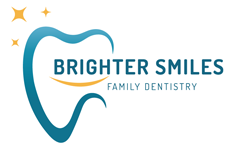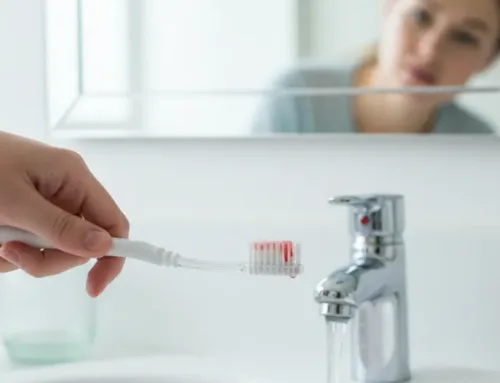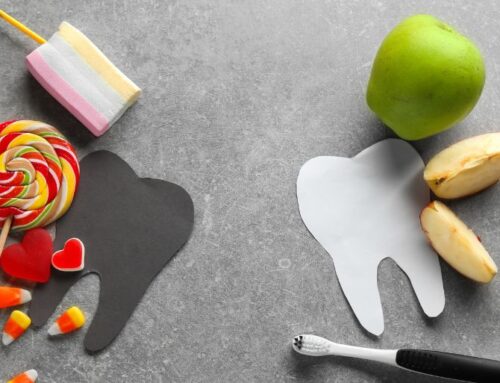Dental pain is an issue many people in West Des Moines face, whether it’s a dull ache, sharp sensitivity, or persistent discomfort.
It can disrupt your day, making even simple activities like eating or speaking uncomfortable.
Understanding how to manage dental pain at home is essential for temporary relief while you determine if professional care is needed.

In this guide, we’ll explore effective home remedies that can soothe pain quickly, highlight red flags that require immediate attention from a dentist, and provide tips for prevention.
If you’re in West Des Moines and need professional care, Brighter Smiles Family Dentistry is here to help, offering expert solutions for lasting relief.
Quick Relief for Dental Pain
When dental pain strikes, knowing how to find immediate relief is crucial. Here are three simple and effective remedies you can use at home to ease your discomfort while preparing to visit a dentist.
These methods are easy, safe, and provide quick tooth pain relief.
Remedy #1. Saltwater Rinse
A saltwater rinse is a classic toothache home remedy known for reducing inflammation and disinfecting your mouth. The salt helps cleanse the affected area, easing irritation and promoting healing.
How it works:
Saltwater creates a natural antiseptic environment that flushes out debris and bacteria from around the painful tooth or gum area.
Step-by-step instructions:
- 1
Mix around half a teaspoon of salt into approximately 8 ounces of warm water, stirring thoroughly until it’s fully dissolved.
- 2
Gently swirl the mixture in your mouth for about 30 seconds, concentrating on the area where the pain is most noticeable.
- 3
Spit it out and repeat up to 3 times a day for best results.
This quick and easy remedy is a reliable starting point for managing dental pain.
Remedy #2. Cold Compress
If your dental pain is accompanied by swelling, a cold compress can provide soothing toothache relief. The cold helps numb the area and reduces inflammation.
When to use it:
Ideal for swelling caused by toothaches, gum irritation, or injuries to the face or jaw.
How to apply:
- 1
Use a soft towel or fabric as a barrier between your skin and a cold pack or frozen items to ensure comfort and prevent any skin irritation.
- 2
Hold it against the painful area on your cheek for 15-20 minutes at a time.
- 3
Repeat every few hours as needed.
This method not only offers emergency toothache relief but also minimizes visible swelling.
Remedy #3. Over-the-Counter Pain Relievers
For faster, more targeted relief, over-the-counter (OTC) pain relievers are a trusted solution. These toothache remedies can help reduce discomfort while you address the underlying issue with a dentist.
Effective Home Remedies for Dental Pain
If you’re looking for additional ways to manage tooth pain at home, these home remedies for toothache can help. They are simple to prepare, effective for temporary relief, and may already be in your pantry or medicine cabinet.
Here’s how to use them safely and effectively.
1. Hydrogen Peroxide Rinse
Hydrogen peroxide acts as a reliable antiseptic, helping to eliminate bacteria in the mouth and offering relief from discomfort caused by minor infections or swelling.
Instructions for safe use:
- 1
Combine equal amounts of 3% hydrogen peroxide and plain water, such as half a cup each, to create a safe diluted solution.
- 2
Rinse your mouth with the mixture for roughly 30 seconds, ensuring not to ingest any of the solution.
- 3
After swishing, expel the mixture and rinse your mouth well with clean water to remove any residue.
Warnings:
2. Clove Oil
For centuries, clove oil has been used as a natural solution for toothaches due to its soothing and antibacterial qualities, making it a reliable choice for pain relief.
Benefits:
It contains eugenol, which acts as a natural anesthetic and helps reduce swelling and discomfort.
Application methods:
- 1
Apply a tiny drop of clove oil to a cotton ball or swab.
- 2
Lightly hold it against the sore tooth or gum area to help alleviate the discomfort.
- 3
Alternatively, blend a drop of clove oil with a few drops of mild carrier oil, like olive oil. With a clean finger, lightly apply the mixture to the irritated area to soothe discomfort.
Precautions:
Use clove oil sparingly, as excessive application may irritate the gums or surrounding tissue.
3. Peppermint Tea Bags
Peppermint tea bags, commonly used for a soothing cup of tea, can also provide relief by easing gum irritation and reducing tooth discomfort.
How they work:
The menthol in peppermint has a cooling effect that helps numb pain and reduce inflammation.
Tips for use:
- 1
Brew a peppermint tea bag and allow it to cool to a comfortable temperature.
- 2
Apply the slightly warm tea bag directly to the painful area.
- 3
For a cooling effect, place the tea bag in the freezer for a few minutes before using.
4. Garlic Paste
Garlic, commonly used in cooking, also serves as a potent natural remedy due to its antibacterial properties, which can help alleviate tooth pain linked to infections.
Why it works:
Garlic contains allicin, which combats harmful bacteria in the mouth and reduces inflammation.
How to prepare it:
- 1
Mash a peeled garlic clove into a smooth paste using a spoon or the flat side of a knife.
- 2
Mix it with a pinch of salt for added effectiveness.
- 3
Apply the paste to the painful tooth and let it sit for a few minutes before rinsing with warm water.
5. Vanilla Extract
Vanilla extract isn’t just for baking—it has mild antiseptic and numbing properties that can help ease tooth pain.
Antiseptic properties:
The alcohol content in vanilla extract helps disinfect the area and provides a soothing effect.
Application instructions:
- 1
Dip a clean cotton swab into pure vanilla extract.
- 2
Lightly dab it onto the sore tooth or surrounding gums for relief.
- 3
Repeat as needed for temporary relief.
When to See a Dentist
While home remedies can offer temporary relief, some dental issues require immediate attention from a professional. Knowing when to consult a dentist is essential for preventing more serious problems.
Red Flags for Professional Attention
Certain signs indicate that your dental pain might be more than a minor inconvenience. If you experience any of the following, it’s time to schedule a dental visit:
- 1
Persistent pain lasting more than 2 days:
Tooth pain that doesn’t improve or worsens over time could point to an underlying issue, such as a cavity, infection, or gum disease.
- 2
Symptoms like fever or swelling:
These are signs your body might be fighting an infection. Left untreated, dental infections can spread and cause complications.
- 3
Trouble breathing or swallowing:
These symptoms can signal a more severe condition, like a spreading infection or an abscess, that requires immediate care.
Ignoring these warning signs could result in more complex treatment needs later on.
Emergency Dental Situations
Sometimes, dental problems escalate to the point of requiring urgent care. Recognizing these emergencies can help you act quickly to protect your oral health:
For residents of West Des Moines, Brighter Smiles Family Dentistry is completely equipped to handle dental emergencies and provide the care you need when time is critical.
Common Causes of Dental Pain
Understanding what might be causing your dental discomfort can help you manage the pain and seek appropriate treatment. Below are some of the most common culprits behind toothaches and other oral issues.
1. Tooth Decay and Cavities
Dental pain is often caused by tooth decay, which is among the most common oral health issues. Bacteria in your mouth consume sugars and release acids, which gradually break down the enamel and lead to cavity formation.
2. Gum Disease
Periodontal disease, also called gum disease, is also a frequent source of dental discomfort. It starts with gingivitis, characterized by red, swollen gums, and can progress to periodontitis, which affects the deeper structures supporting the teeth.
3. Tooth Sensitivity
If your teeth react strongly to hot, cold, or sugary foods, you may be experiencing sensitivity.
Simple adjustments, like switching to a toothpaste designed for sensitive teeth, can help, but severe cases may require a dentist’s intervention.
4. Cracked or Broken Teeth
Teeth can break or crack due to trauma, grinding, or biting down on hard objects. Even small cracks can lead to significant discomfort if left untreated.
Preventing Future Dental Pain
The best way to avoid dental pain is through proactive care and healthy habits. By taking preventive measures and habits, you can protect your teeth and gums, minimizing the likelihood of discomfort or serious oral health issues.
Regular Oral Hygiene
A rock-solid foundation for oral health starts with consistent hygiene practices.
By maintaining these habits, you can keep your smile healthy and pain-free.
Routine Dental Checkups
Routinely scheduled visits to your dentist are crucial for catching potential problems early and handling them before they cause pain or damage.
Early intervention not only prevents pain but also saves time and money on more extensive treatments later.
Diet and Lifestyle Choices
What you eat and drink plays a significant role in maintaining oral health.
Making conscious decisions about your diet and lifestyle can significantly reduce your risk of dental pain and other oral health problems.
FAQs About Dental Pain
Here are answers to some of the most common questions about managing tooth pain, designed to help you find relief and make informed decisions about your oral health.
Conclusion
Dental pain can be disruptive, but home remedies like saltwater rinses, cold compresses, and natural treatments can provide temporary relief. These solutions are helpful for managing discomfort until you can visit a dentist.
However, persistent or severe pain is often a sign of a more sever issue that requires professional care. Regular dental checkups and preventive measures are key to avoiding future problems.
If you’re in West Des Moines, Brighter Smiles Family Dentistry is here to provide expert care, whether you need immediate pain relief or ongoing oral health support. Don’t hesitate to schedule an appointment for a healthier, pain-free smile!

About the Author
Brighter Smiles Family Dentistry, led by Dr. Melani Fulton, upholds a legacy of exceptional dental care in West Des Moines, IA. Dr. Fulton, a University of Iowa College of Dentistry alumna, specializes in family dentistry and orthodontics. She succeeded Dr. Dan Todd in 2021, continuing a tradition of patient-centered, high-quality dentistry. Committed to gentle, modern treatments, Dr. Fulton’s approach is deeply rooted in community values, ensuring every patient feels like family at Brighter Smiles.




